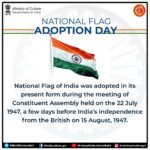19TH Non-Aligned Movement Summit: Basics Explained

Leaders from the 120-member bloc met in Kampala, Uganda, for the 19th Non-Aligned Movement (NAM Summit. Motto of the summit was: ‘Deepening Cooperation for Shared Global Affluence’.
Leaders of NAM countries have denounced Israel’s military campaign on the Gaza Strip and demanded an immediate ceasefire to achieve a two-state solution based on the pre-1967 borders.
They expressed support for increased representation for Africa in the reformed Security Council. The summit also pledged to uphold and promote respect for the UN charter and international law. The declaration also condemned terrorism in all its forms and manifestations.

NAM HISTORY
Leaders created and founded the Non-Aligned Movement (NAM) during the collapse of the colonial system, the independence struggles of the peoples of Africa, Asia, Latin America, and other regions of the world, and at the height of the Cold War.
During the early days of the Movement, its actions were a key factor in the decolonization process, which led later to the attainment of freedom and independence by many countries and peoples and to the founding of tens of new sovereign States. Throughout its history, the Movement of NAM has played a fundamental role in the preservation of world peace and security.
The Bandung Asian-African Conference
It is the most immediate antecedent to the creation of the Non-Aligned Movement. They held this conference in Bandung on April 18-24, 1955.
A key role was played in this process by the then Heads of State and Government Gamal Abdel Nasser of Egypt, Kwame Nkrumah of Ghana, Shri Jawaharlal Nehru of India, Ahmed Sukarno of Indonesia, and Josip Broz Tito of Yugoslavia. They later became the founding fathers of the movement and its emblematic leaders.
Six years after Bandung, leaders founded the Movement of Non-Aligned Countries on a wider geographical basis. The First Summit Conference of Belgrade, held on September 1-6, 1961.
The following purposes and principles of the movement in the present International juncture reflect that the movement has not lost its relevance after the end of the Cold War and in the present international globalized order North-South Divide, South-South Cooperation, Multilateral, Equal and Differential Treatment and other issues concerning the third world countries reflects that NAM has more pressing issues to deal with and still has relevance in present time
- To promote and reinforce multilateralism; To condemn all manifestations of unilateralism and attempts to exercise hegemonic domination in international relations.
- To strengthen the central role that the United Nations; To promote the strengthening and democratization of the UN.
- Political coordination of the developing countries to promote and defend their common interests in the system of international relations.
- To promote and encourage sustainable development through international cooperation under equal conditions and opportunities but with differentiated responsibilities.
- To continue pursuing universal and non-discriminatory nuclear disarmament.
In conclusion, The Non-Aligned Movement, faced with the goals yet to be reached and the many new challenges that are arising, is called upon to maintain a prominent and leading role in the current International relations in defense of the interests and priorities of its member states and for the achievement of peace and security for man.
Giani Zail Singh was also the Secretary General of the Non-Aligned Movement for some period.






0 Comments